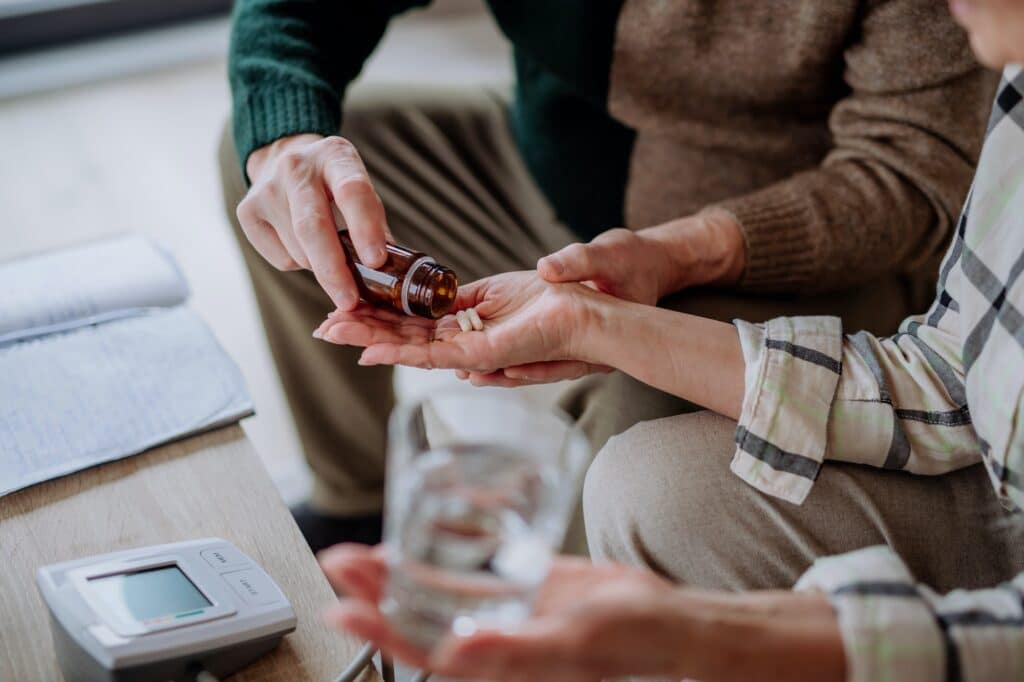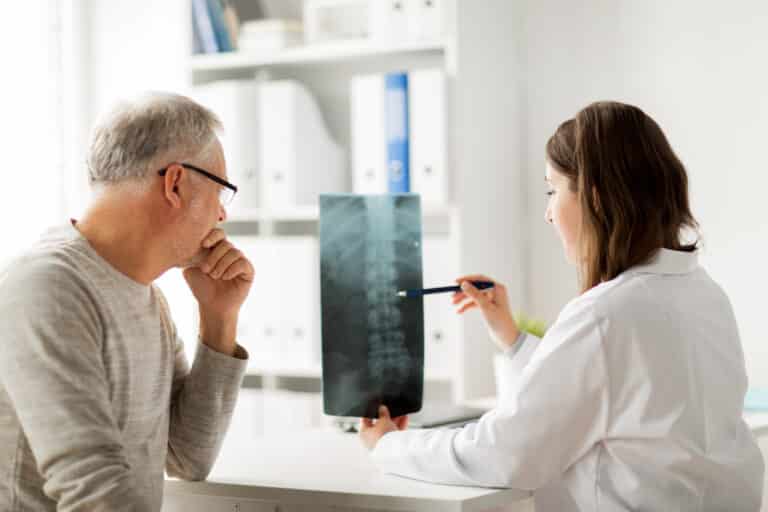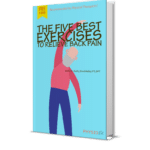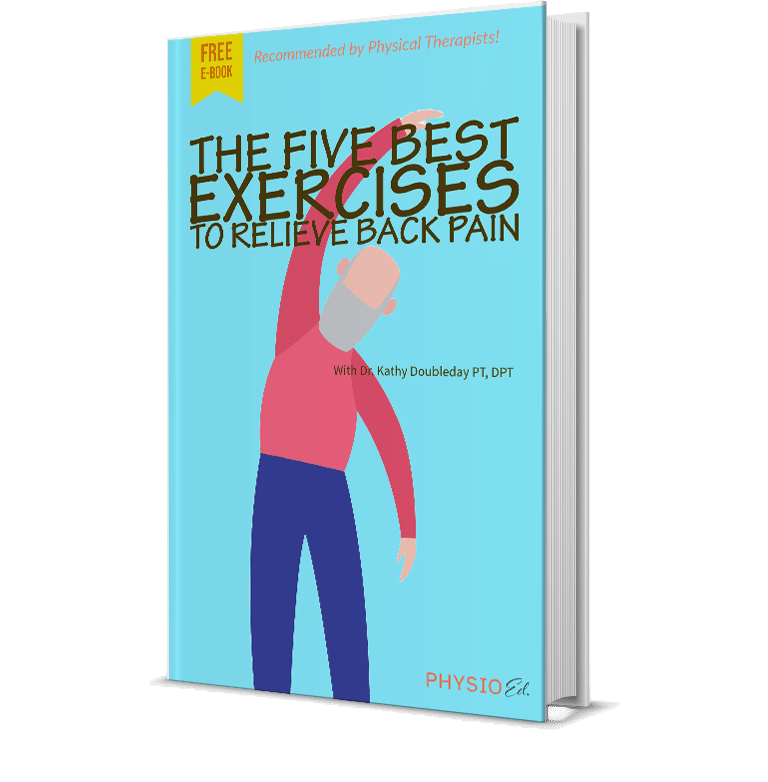Back pain can make your favorite activities and your daily life more difficult. When new back pain or flare-ups arise, most people will do whatever they have to relieve pain and keep their symptoms under control.
While medications are commonly prescribed to treat back pain, many older adults are now seeking drug-free alternatives for either chronic or acute pain relief.
It’s essential to understand medication use for back pain, what the research says, and how physical therapy and exercise may be a potent and helpful alternative to medication for long-lasting back pain relief.
Medication for Back Pain: How Effective Is It?
Many older adults turn to medication as a first line of treatment when dealing with back pain. Medication is what’s known as a passive treatment approach, meaning it doesn’t require any effort to see results.
While many doctors used to prescribe certain medications for low back pain immediately, few doctors still follow this approach—but why?
Despite popularity over the years, recent research shows that many medications may be less effective than no treatment for meaningful back pain relief. (1)
This means that in some cases, looking at the effects of pain medication versus placebo shows minimal benefit. Medication may be helpful in the right circumstances. Still, it’s important to understand that most episodes of low back pain will begin to resolve without any medical treatment.
For many adults, shorter episodes of back pain typically resolve within a few weeks, while some will resolve after a few months. (2)
While medication alone may not be very effective, it can be combined with other treatments to enhance recovery, such as physical therapy or surgery in more extreme cases.
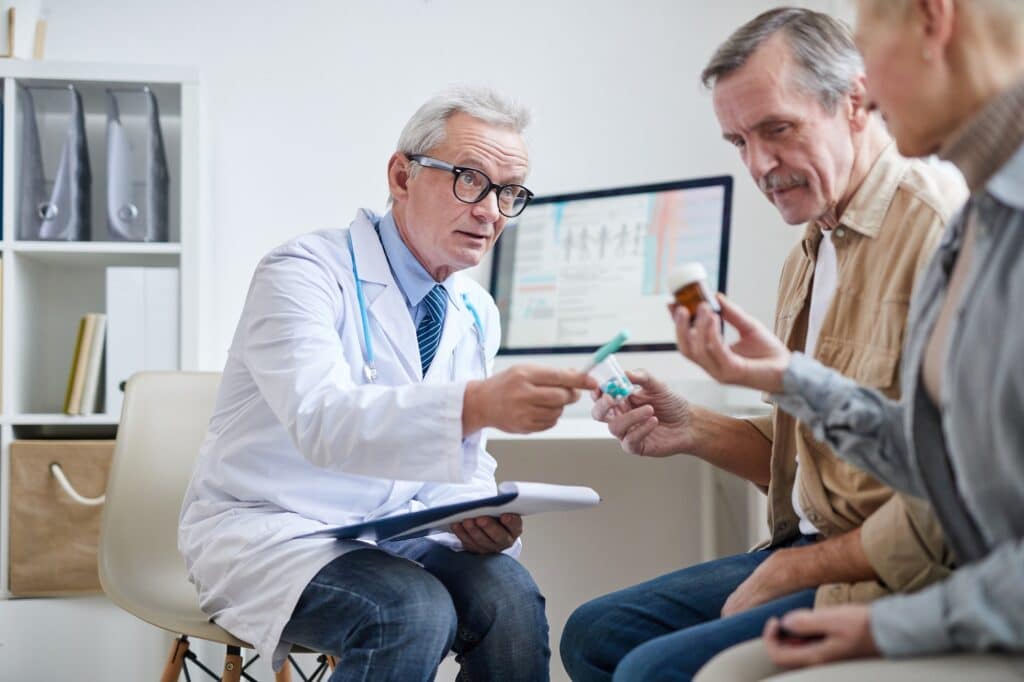
Common Medications for Back Pain
There are many different types of medication for addressing back pain, so we will cover the most common types here:
Analgesics
Also called painkillers, these are medications that act on different mechanisms in the body to dampen or block the body’s ability to feel pain.
One typical example of an analgesic is Acetaminophen or Tylenol.
An example of an opioid analgesic—a much more potent painkiller—is Morphine or MS Contin.
Anti-Inflammatories
These medications target the body’s inflammation response to pain and tissue damage, which can help prevent swelling, tenderness, and pain.
One common example of an anti-inflammatory is Ibuprofen or Advil.
Muscle Relaxers
Far more potent than most over-the-counter medications, muscle relaxers help limit muscle tension that may result from and amplify pain. Methocarbamol or Robaxin is a commonly prescribed muscle relaxer.
Anticonvulsants
Although you may not think seizure medication would be used to manage back pain, these are often prescribed to treat back pain and certain complications like leg pain.
An example of an anticonvulsant is Gabapentin or Neurontin. (3)
It is common for both analgesics and anti-inflammatories to be used in back pain relief patches and heating or cooling chemicals to enhance their effects.
Because drugs can affect the body in many ways, each of these medications has unique considerations and side effects that should be carefully considered with the help of your doctor before use.
The Complications and Costs of Medication
When deciding if a medication is appropriate, knowing potential side effects, drug interactions, prescription costs, and your long-term prognosis with medication is essential.
Side Effects
Side effects are common with virtually all medications; some are much worse than others. Some prescription medications, such as opioids, are known to increase fall risk and can be highly addictive, making them especially risky for older adults.
Although over-the-counter medications may seem free of side effects, many can harm the liver in high doses or for an extended period.
For example, Acetaminophen toxicity is the second most common reason for liver transplantation worldwide despite being easily purchased over-the-counter medicine. (4)
Drug Interactions
Drug interactions are potentially harmful or unsafe side effects that can occur when taking multiple medications simultaneously.
Many adults are prone to drug interactions when trying out numerous new medicines for pain or opting to use an old prescription during a flare-up that may interact with a new medication.
When deciding whether or not to take a medication, it’s essential to talk with your doctor to see if there could be a possible reaction with your other medicines or if other drugs may not be needed anymore.
Generally, taking multiple prescriptions (known as polypharmacy) contributes to adverse drug reactions in older adults and should be avoided where possible.
Costs & Drawbacks
Prescription costs are a significant consideration for many older adults. It’s essential to consider the long-term financial costs of using oral medications or back pain relief patches to manage back pain.
By keeping costs low, more money is left for other helpful treatments such as a gym membership, relaxation activities, or more supportive furniture.
Finally, we must be clear that medication typically only temporarily relieves pain — it is not a cure. Certain medicines can dampen both acute and chronic pain. Still, pain prevalence will remain a problem without a more comprehensive treatment program.
Physical therapy-based exercise programs can be highly beneficial in treating the root cause of your pain, while simply relying on medication may result in further deterioration, often worsening the pain.
Your long-term prognosis may not be the first thing on your mind when opting for medication, but it’s important to consider it during all recovery phases.
Since medication is shown to have minimal long-term positive effects on low back pain in isolation, it’s best to try and keep medication use for back pain in the short-term whenever possible.
Surgery for Back Pain – When Is It Needed?
Many surgeries can be used to treat various causes of back pain. However, the risks and benefits should be weighed carefully before deciding if surgery is right for you.
The potential for complications is the most significant factor when considering surgery for back pain.
Although every surgery has inherent risks, spine surgeries have slightly higher chances for complications because they are done close to a segment of the spinal cord called the cauda equina, a sensitive part of your nervous system that controls motor function and sensation for your lower body.
In addition, other common risks, such as infection or issues with blood clotting, are still present and should be taken seriously.
Back surgery isn’t cheap either and may cost several thousand dollars, even with insurance coverage. This reinforces the importance of considering all other options before deciding if surgery is the appropriate medical and financial option for getting back pain relief. (5)
After back surgery, mobility in the spine, even for simple activities like walking, will often be significantly limited for weeks to months, depending on the procedure.
Additionally, most surgeries are followed by physical therapy to strengthen the muscles surrounding the spine. Because of this, active interventions like exercise are often prescribed first to see how much benefit can be gained before deciding if surgery is the best option.
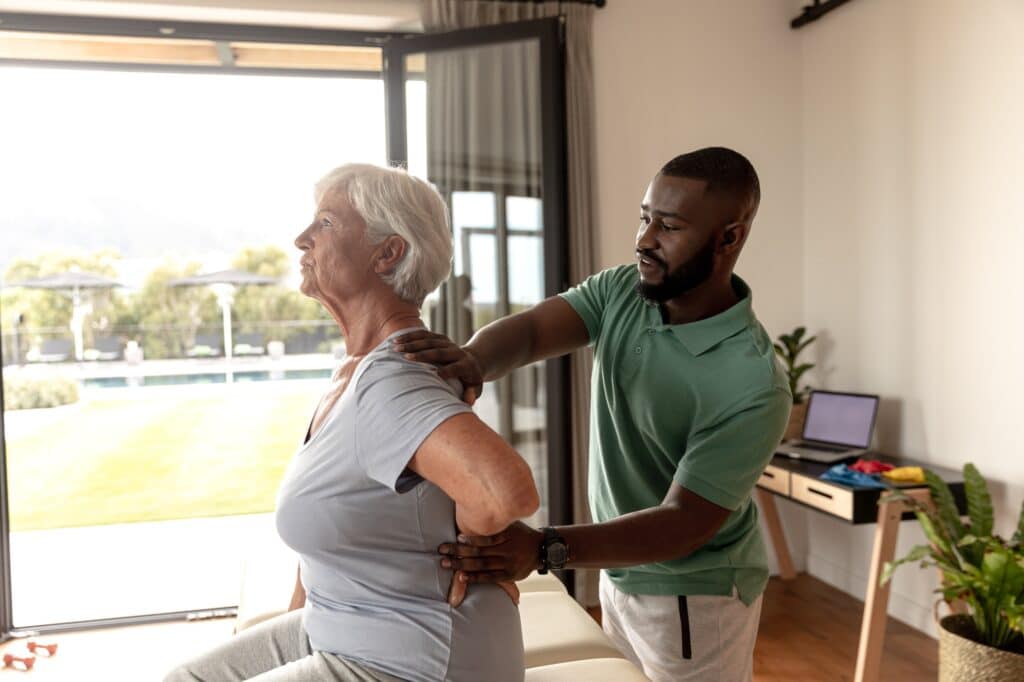
Physical Therapy and Exercise for Low Back Pain
Alternative, drug-free treatments for back pain have become more critical than ever. Many older adults are choosing physical therapy and exercise to help treat their back pain and get back to doing what they love.
New clinical practice guidelines recommend physical therapy as the first line of treatment for many types of back pain.
What is Physical Therapy?
Physical therapists are health care professionals clinically trained to provide prescriptive medical exercise and care focusing on several physical body systems. Depending on the condition, PTs can help in several ways.
In the case of low back pain, a physical therapy regimen may include anything from spinal manipulation to targeted stretching exercises.
A physical therapist can also help you to build a comprehensive at-home exercise program. Often, core strengthening exercises will be prescribed to rebuild support for the low back, accompanying a series of physical therapy visits to help you manage your pain.
What to Expect From Physical Therapy for Back Pain
Physical therapy improves back pain by strengthening your back and helping to redistribute or otherwise limit stress on the spine during activity. This translates to less back irritation during movement and more tolerance for everyday activities.
Your physical therapist may also teach you strategies to modify how you do specific movements, educate you on pain management strategies, and recommend supportive equipment such as a lumbar support roll or shoe orthotics.
The long-term prognosis with physical therapy is much more favorable than medication or surgery alone. This is because activities like exercise and learning how to manage your condition can help get back pain under control and prevent it from happening in the future.
Physical therapy can be combined with other reputable drug-free options for back pain, such as electrical stimulation, massage therapy, acupuncture, and cognitive behavioral therapy. It’s essential to try different combinations of treatments and find out what works best for you.
Making The Right Choice
While medications used to be the most popular treatment for back pain, older adults now have many options to help get them meaningful results.
It’s important to emphasize that medication for back pain usually only provides temporary relief. While drugs can relieve pain for some time, many back pain conditions require various methods to treat the underlying problem, not just the resulting pain.
With a better understanding of common medications and their uses, the difficulties surgery can involve. With the wide applications of physical therapy for back pain relief, you can start on the path to less pain and a better quality of life.
Be sure to talk with your doctor about your specific needs and goals to build a back pain plan that works for you.
References
Wewege M A, Bagg M K, Jones M D, Ferraro M C, Cashin A G, Rizzo R R et al. Comparative effectiveness and safety of analgesic medicines for adults with acute non-specific low back pain: systematic review and network meta-analysis BMJ 2023; 380 :e072962 doi:10.1136/bmj-2022-072962. https://www.bmj.com/content/380/bmj-2022-072962
Vassilaki M, Hurwitz EL. Insights in public health: perspectives on pain in the low back and neck: global burden, epidemiology, and management. Hawaii J Med Public Health. 2014;73(4):122-126. https://www.ncbi.nlm.nih.gov/pmc/articles/PMC3998232/
Atkinson JH, Slater MA, Capparelli EV, et al. A randomized controlled trial of gabapentin for chronic low back pain with and without a radiating component. Pain. 2016;157(7):1499-1507. doi:10.1097/j.pain.0000000000000554 https://www.ncbi.nlm.nih.gov/pmc/articles/PMC5001843/
Agrawal S, Khazaeni B. Acetaminophen Toxicity. [Updated 2023 Feb 12]. In: StatPearls [Internet]. Treasure Island (FL): StatPearls Publishing; 2023 Jan-. Available from: https://www.ncbi.nlm.nih.gov/books/NBK441917/
Beckerman D, Esparza M, Lee SI, et al. Cost Analysis of Single-Level Lumbar Fusions. Global Spine J. 2020;10(1):39-46. doi:10.1177/2192568219853251. https://www.ncbi.nlm.nih.gov/pmc/articles/PMC6963351/

